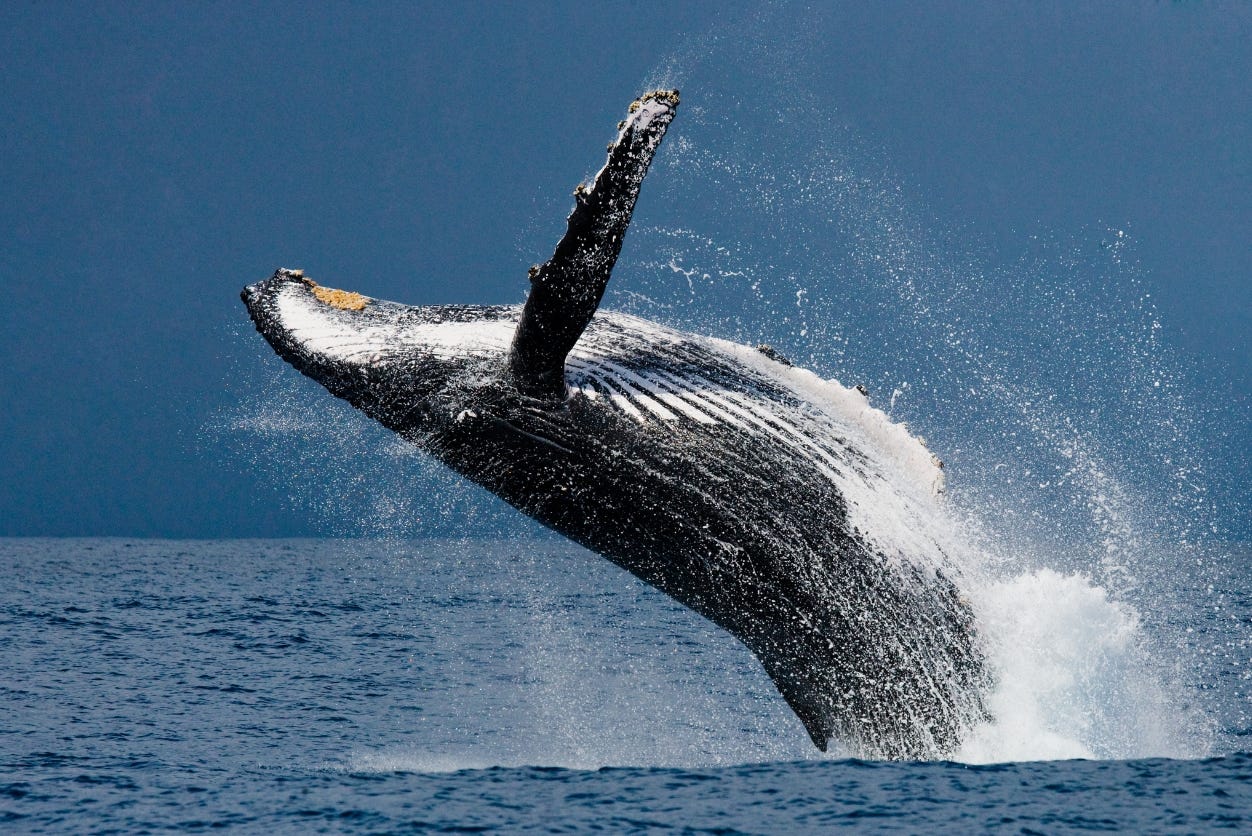Good News #28
World's largest solar mural in Canada, Humpback Whale comeback in Australia, solar-powered village in Malawi, rice farmers helping birds in California, rare Wombat births in Queensland
Hello Friends,
Tonight may be one of the most epic nights of the year. Every Halloween, our street shuts down and is taken over by trick-or-treaters — and tonight it happens on a Friday. If that weren’t enough, it’s Game 6 of the World Series — happening right here in Toronto!!! If the Blue Jays win tonight’s game, they win the series for the first time in 32 years — and this city will go bonkers. (If you’re a Dodgers fan, please don’t leave me.)
Between the games and the Halloween prep, it’s been an exciting week! But believe it or not, there are even bigger things to get pumped about — from Humpback Whales making a comeback in Australia to Malawi’s first 100% solar village. Take a look at the amazing stories I’ve pulled together for this week’s Good News roundup.
Happy Halloween!
Brett
World’s largest solar panel mural powers Canadian building
A new installation in Edmonton, Alberta, has combined art and clean energy to create the world’s largest solar panel mural. Covering an apartment building with 400 solar panels, the project produces enough electricity to offset 150 tons of CO₂ annually — equivalent to taking 32 cars off the road. Designed by local artists and supported by the city’s sustainability fund, it’s a striking example of how public art and renewable energy can coexist beautifully.
Australia celebrates the Humpback comeback
After decades of protection from whaling, Australia’s humpback whale population has rebounded dramatically — from just a few hundred in the 1960s to more than 40,000 today. Scientists, marine conservation groups, and Indigenous communities are celebrating the species’ recovery, calling it one of the world’s great conservation success stories. While challenges like shifting food sources remain, the comeback underscores the power of strong wildlife protection and international cooperation.
Malawi’s first fully solar-powered village lights the way
Kasakula Village in rural Malawi has achieved a major milestone: 100 percent solar energy access for all homes, schools, and clinics. The project, led by the nonprofit SolarAid, replaces costly and polluting kerosene lighting with clean, reliable solar power. Residents report better school performance, safer nighttime conditions, and thriving small businesses — a model now inspiring similar community projects across sub-Saharan Africa.
Rice farmers and migratory birds help each other thrive
In California’s Central Valley, rice farmers are teaming up with conservationists to create bird-friendly wetlands on farmland. By carefully managing flooded fields after harvest, growers are providing crucial stopover habitat for millions of migratory birds — while improving soil health and water efficiency. The partnership, supported by the Nature Conservancy and local agricultural groups, shows how regenerative farming can sustain both livelihoods and wildlife.
Rare Wombat births mark conservation success in Queensland
Conservationists in Queensland are celebrating the birth of three northern hairy-nosed wombat joeys — the first wild-born young at a newly established population site in Powrunna State Forest. Once down to just 35 individuals, the species now numbers over 350 thanks to decades of habitat protection and reintroduction efforts. The discovery is a hopeful sign that this critically endangered marsupial is on the path to recovery.



